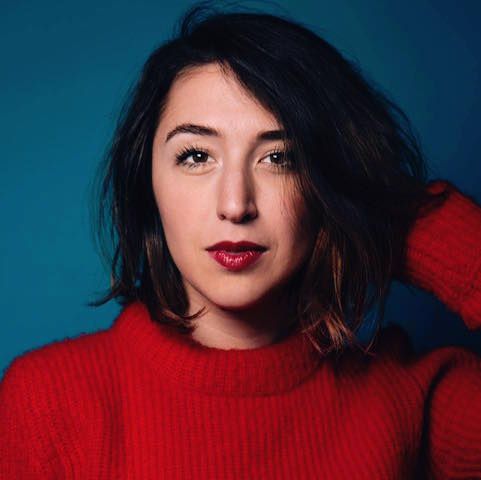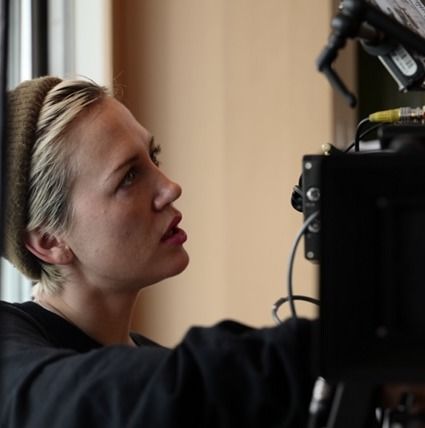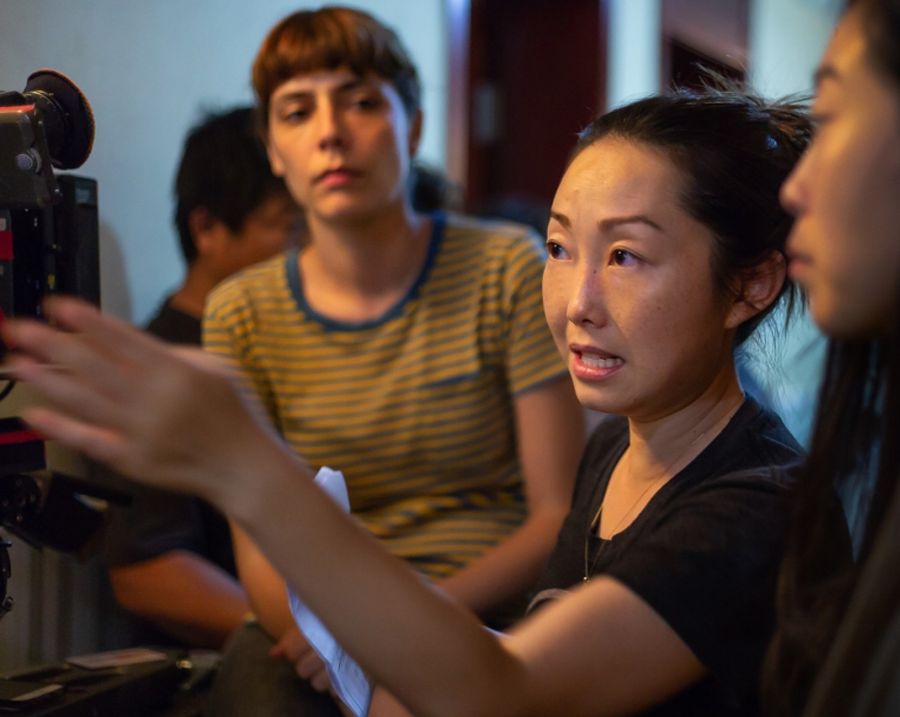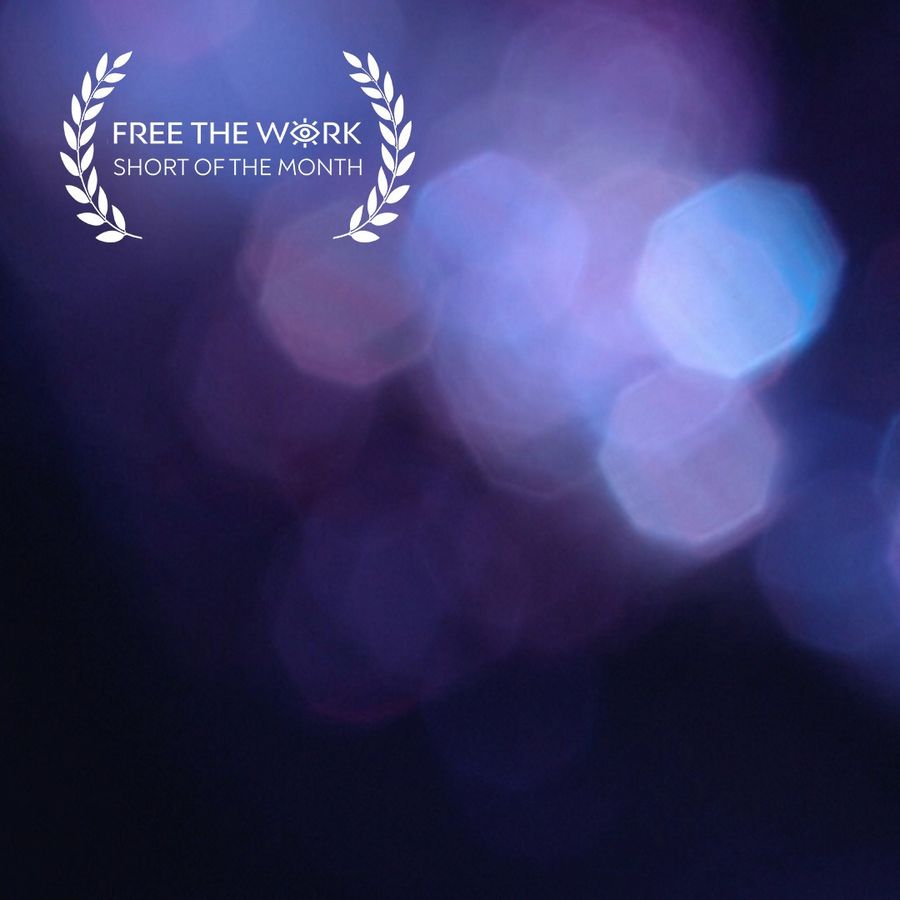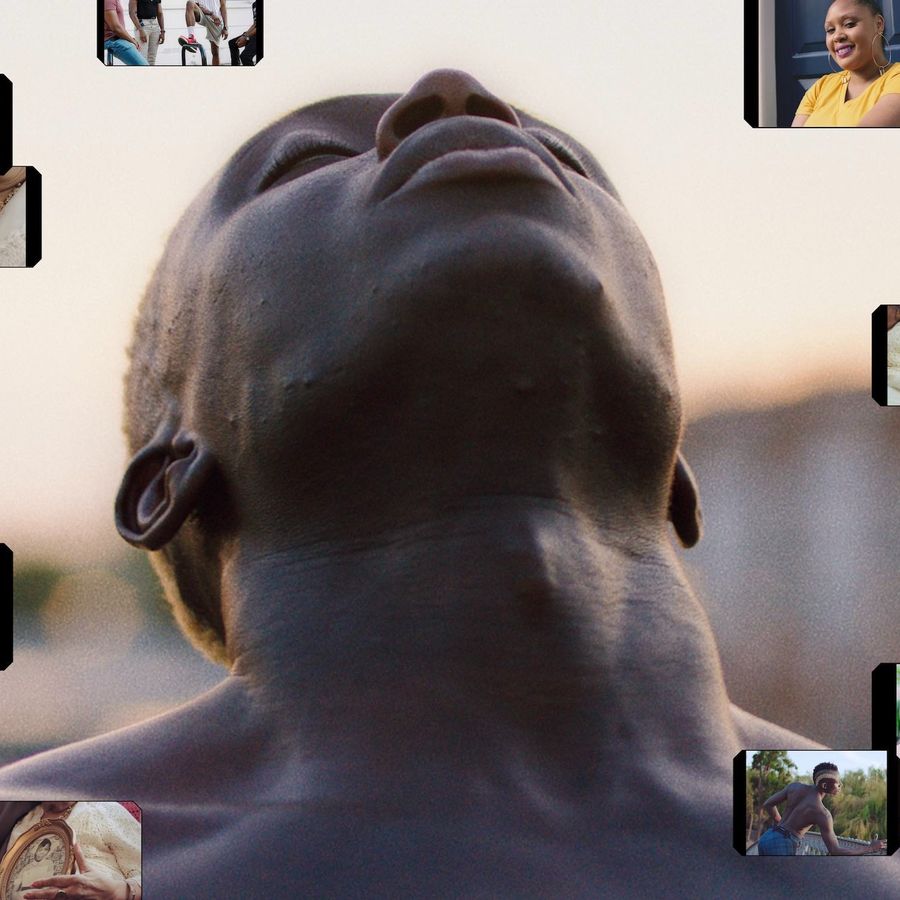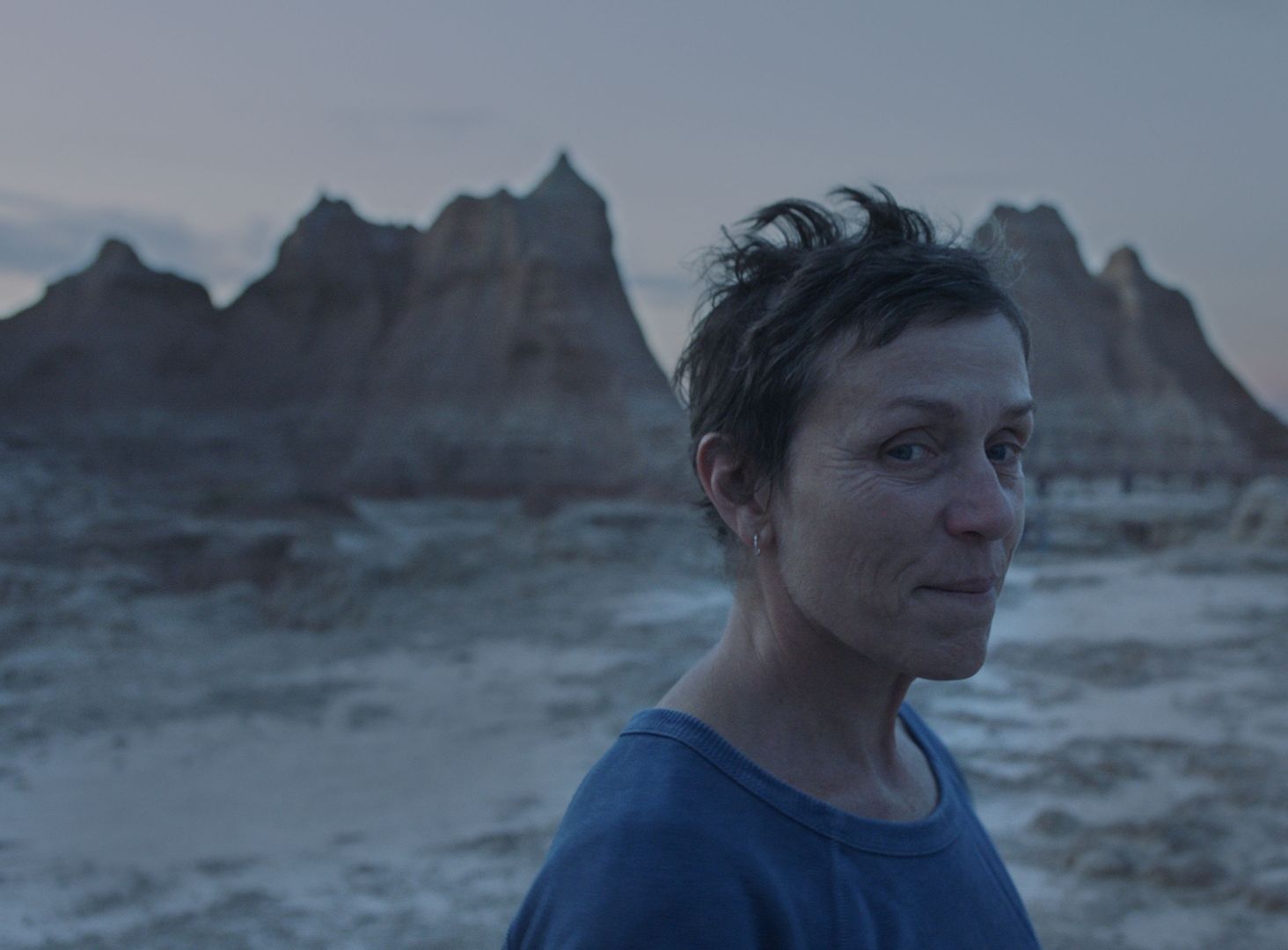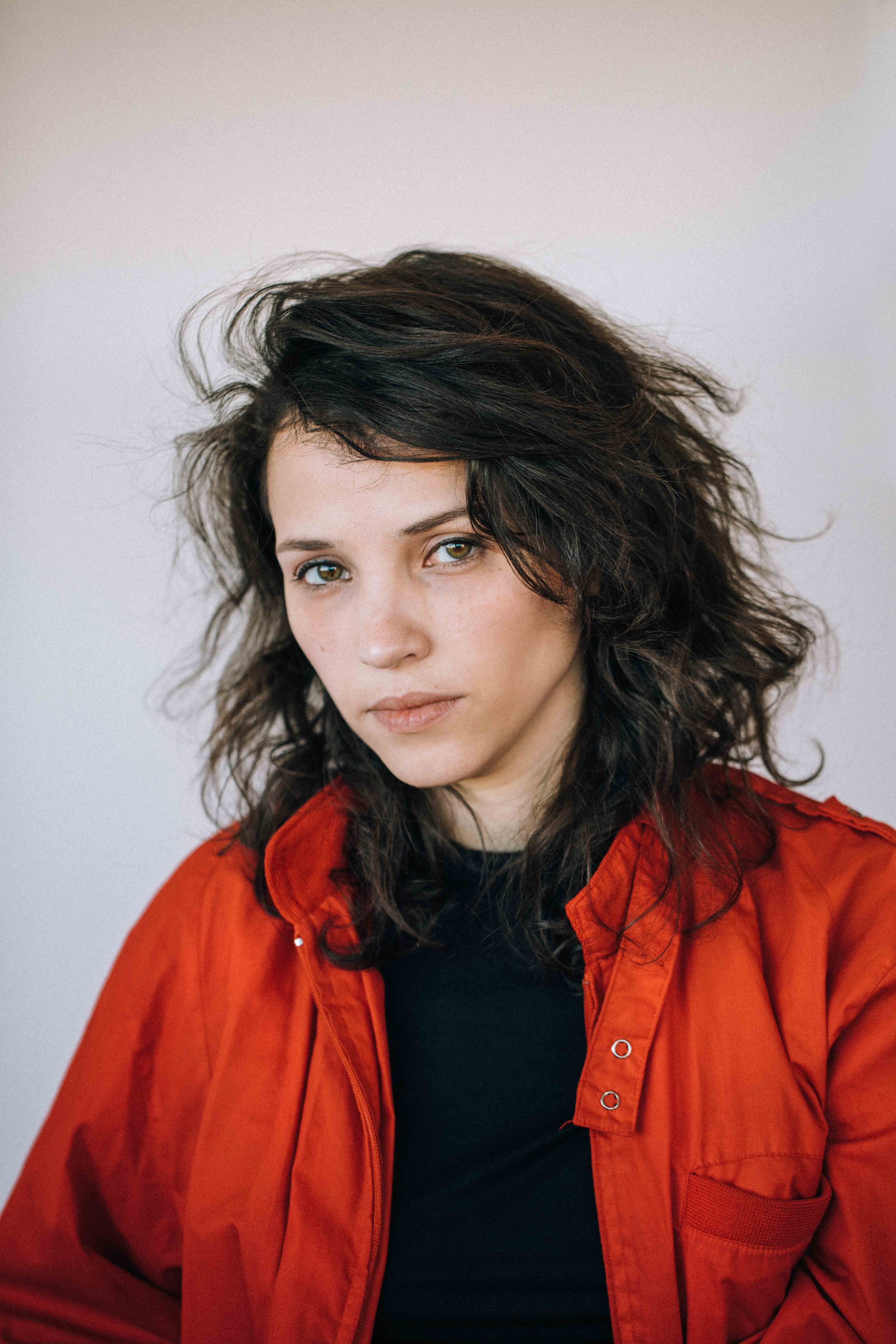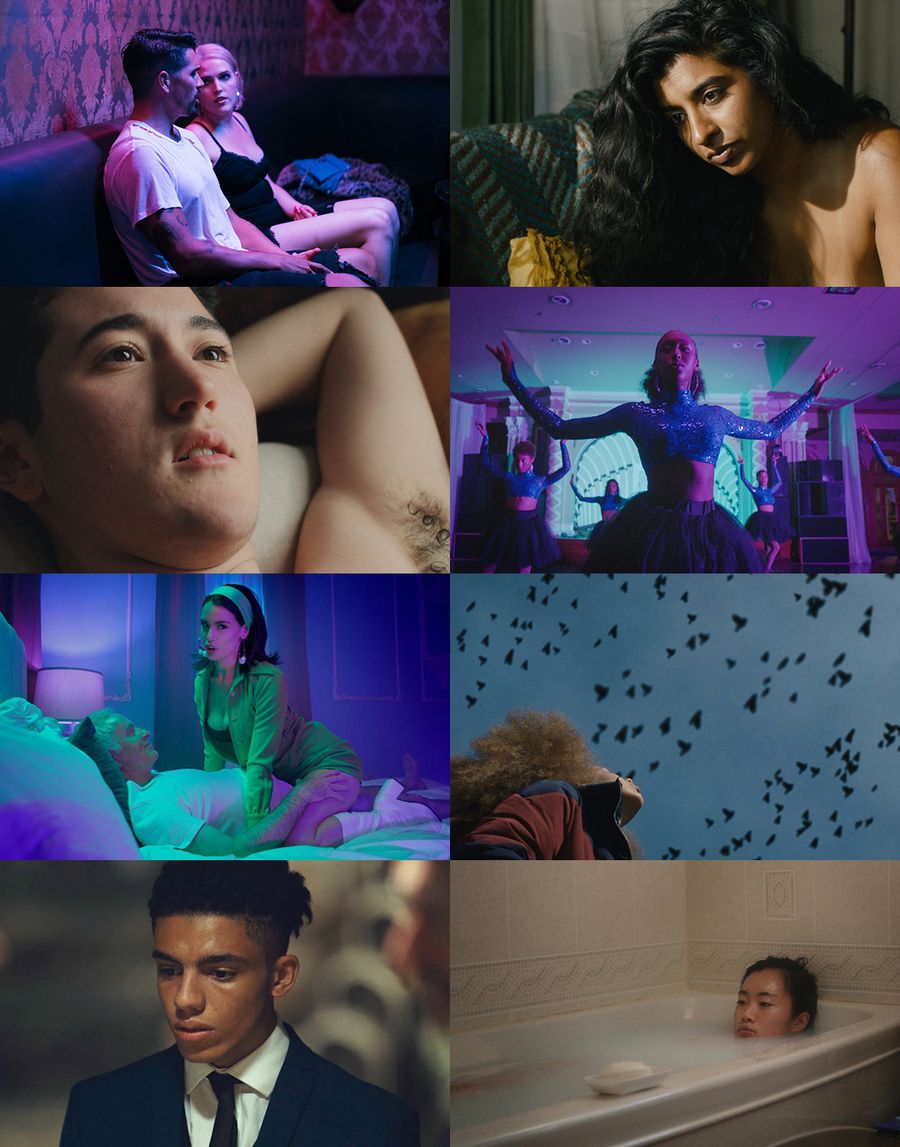All Photos from Swallow BTS / Courtesy of Haley Bennett & IFC Films
Kate Arizmendi’s cinematography walks the accomplished tightrope of being visually striking, vibrant, electric—all while consistently supporting the story. Her work on films like Cam and recently, Swallow, as well as her music video and commercial gems (check them out, sure to transport you), have made her one of the most exciting DPs on the map. Not to mention, she was asked personally by Dune DP Greig Fraser to come on as second unit DP…and is shooting lauded DP-turned-director Rachel Morrison’s new feature Flint Strong.
We had a chance to chat with Arizmendi right before Corona madness hit about everything from her beginnings, to how she refined her style, to the value of social media. We’ve caught up with her since, to check in, see how she’s maintaining creative vibes, and see how sharing Swallow online has been. In the film, from director Carlo Mirabella-Davis, a housewife, Hunter (Haley Bennett), begins to develop a strange addiction, despite being newly pregnant. She begins to eat sharp objects around her home. As her relationship with her husband Richie (Austin Stowell) spirals, she’s forced to confront her motivations behind her dark, new secret.
Without further ado, get to know Kate Arizmendi—a creator who continues to show how hard work, a passion for experimentation, and a talent for refining a unique aesthetic, can land you those dream projects and collaborations.
Be sure to check out Swallow, streaming online now.
FREE THE WORK: How have you been spending your quarantine?
Kate Arizmendi: I was three days from starting principal photography on the feature I had been prepping in Toronto called Flint Strong, directed by Rachel Morrison, when we found out the movie was getting put on a hiatus. They booked us flights back to the US a few hours later in fear of us not being able to leave Canada. I went to my apartment in NY where I had a sublet still living there but he was so cool and welcoming to me living with him. It was getting more and more intense being in the city so I snuck upstate to my friend’s cabin a few days ago and being in nature is the biggest saving grace. I feel way more calm and at ease.
What are your creative outlets during this time?
I’ve found myself oddly productive with things I hadn’t ever done before: acrylic painting, making jewelry and body harnesses, nail art, cooking, and taking Hungarian language lessons. It’s been fulfilling to be forced to explore different mediums.
I’d love to open with a really basic question: Why did you decide to become a DP?
I was always really into filmmaking as a kid. I grew up with my brothers and a lot of neighborhood friends. We were always making movies. There was only really one person in my life that was in the film industry and that was my aunt. She worked at MTV as a producer in the ‘80s, in the heyday. I thought that that was such a cool, glamorous sort of life. I truly didn't know what my life would be like as a DP until I started to get into it and started to travel so much.
I decided to study film in my undergrad and I did a generic film studies at UC Santa Cruz which was a lot of experimental film. We were always sort of like, fuck Hollywood, you have to be weird and different. And that really stuck with me. You can see that in the choices of Cam and Swallow, and even in some of my short form work. I was shooting, directing, acting, and editing everything in those classes. By the time I left, I really had no idea how to actually work in the film industry, but I knew what I was into. I had this mindset of wanting to do things that were more experimental.
It wasn’t until I was shooting 16 mm that I learned the technical side and learned what it meant to be DP. It's half technical, half just your instinct and your eye. That's when I decided to pursue cinematography as a degree for my master's. There wasn't any sort of pivotal moment in my life that I knew that I wanted to pursue film, it was just a growing interest.

I’m sure working in all those different areas of film was helpful in communicating as a DP.
Yeah, and there was so much time after film school where I found it really hard to find work. A lot of the work that was being offered to me around the Bay Area (where I lived) was kind of boring—tech commercials and stuff. So I started doing my own stuff and I was kind of directing. It was really just a way for me to experiment, practice, and showcase what I was into and what I wanted to do visually. Then I would edit and spend so much time on small micro-budget projects. But it was such a pivotal time for me; I was just building a website and an aesthetic for myself, and showing people what I was into. That helped me get into more creative commercials.
You have such a particular vibe to your work. How would you describe that aesthetic in your own words?
Back then, it was much more experimental. I would shoot fashion films on my 5D and shove filters in between the lens and the sensor—just to fuck up the image as much as I could. It was a lot more colorful and pretty extreme. [Then I learned] how to combine that with classic lighting, to find somewhere in the middle where it's like realism. I don't ever want my cinematography or my lighting to be distracting. I want it to always benefit or heighten the project.
Funny you say that because I'm upstate with my pal Dean, who’s also a filmmaker, and talking about our interview. And he asked, ‘Well, why do you like her work?’ I literally said exactly what you just explained. Your style is so visually compelling, but always connected to story, never superfluous. Who are some of the DPs or directors that have influenced that?
I've always been in love with Robbie Ryan's work. Benoît Debie. I've also always been inspired by Nan Goldin and photographers. A lot of Lynne Ramsey's work. Buffalo 66, Vincent Gallo's work.
That’s the background of my phone right now. No kidding. I am obsessed with that film.
I basically have a Buffalo tattoo and a 66 tattoo, which is kind of lame. That movie was just so pivotal to me. The choices in directing and editing, like when they hold on one person while the person off screen is talking the entire time. It felt like there's so many specific choices in it that I really loved.

I have a lot of conversations with DPs, at all career stages, about how frustrating it can be to have to wait for a director to give you a shot. What are your thoughts on building relationships with directors?
I've actually never done a feature with someone that I've worked with before, which is kind of crazy. A lot of people do shorts with directors and then those directors go on to do features and shoot them and you already have a relationship and the language together. I would love to do that. There's a lot of commercial directors that I've worked with regularly that I'm really excited and looking forward to when they do their features because we already know how to collaborate together really well. All of the directors that I've done features for really saw something in me and took a chance. I didn't know Danny [Goldhaber who directed Cam], I didn't know Carlo [Mirabella-Davis, that did Swallow], I didn’t know Angel [Manuel Soto of Charm City Kings]. [We had] pretty minimal conversations initially and then they felt like I was right for the project.
It's really important to build those relationships with the directors because [you could develop a] common language and aesthetic. That’s why you see a lot of directors working with the same DPs. But It's interesting to see certain directors that can convey the same exact aesthetic even when they work with different DPs. I really like to have a collaboration and make sure that there's a new language and we set a new set of rules for each film, and it's all about the story.
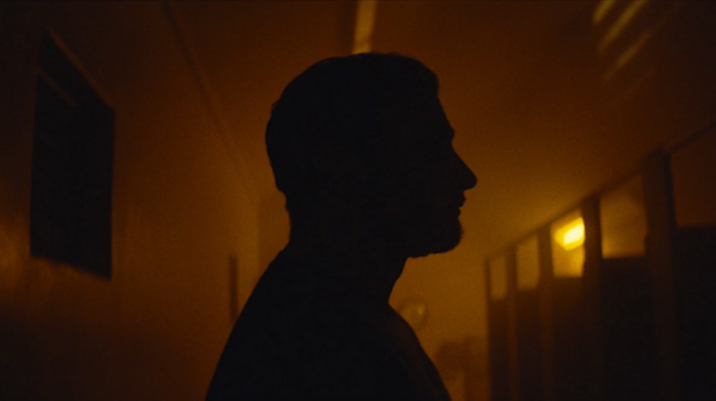
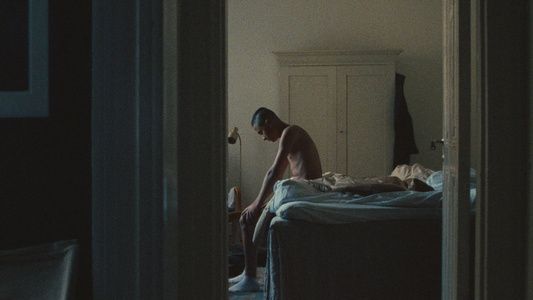

Left and Right: "Valvoline" Advertisement / Courtesy of Variable
Middle: "Sons of My Country" / Courtesy of Indio
Was there a break-out short or music video that changed the game for you?
A commercial that helped my commercial career was "Valvoline," which I did with Salomon Ligthelm. I still feel like people bring that up and were really, really connected to that. Funny enough my commercial and music video work translated enough for people [in the narrative space]. Rachel [Morrison], when she was considering me and a few other people [for Flint Strong], would bring up my commercial work.
More recently, there's this short film that I did with Philippe Tempelman called "Sons of My Country." It's not out yet, but I have sent that project to quite a few people. I would say that's a big reason why I got second unit on Dune, because it's really strong as far as my narrative work goes. It's a good way to show that you can make something really beautiful and really strong for a low budget.
I think every director wants to know that's possible! How important do you think an Instagram and social media presence is? Would you encourage it for DPs?
It's super pivotal. I mean, in some ways, it's toxic. There's pros and cons. Even before Instagram, I had a Tumblr I put my work on. Whatever social media platform was the biggest at that time, I was putting my work out there. I was always updating my reel, making myself appear to be working and more productive than I actually was. That is a huge thing about Instagram, you make yourself seem like you're always working and you're putting new work on there. Now Instagram is the number one way to connect with people.
I know there's friends of mine that are really talented, but also they're nervous to put their work out there, or just don't feel good enough, or it scares them. Unfortunately, it's just the only way that you can get people to respond to you. I think obsessing over what everyone else is shooting and constantly seeing everyone else's work either subliminally or intentionally [can lead to] copying. I used to obsessively [seek out] who was shooting the next Nike or Adidas commercial. I try to tune it out now.
Working on Swallow, what was your process getting the visuals to align with the story?
Carlo [Mirabella-Davis] and I sat down for our initial meeting and over three hours we put together a three-page document of rules and ideas for each scene, each dynamic, each character relationship and [Hunter’s] relationship with objects. We wanted to cover scenes with Richie and the family with more mediums and the parents get a two shot because they're basically one overpowering unit. Then you get more close ups, and Hunter center frame when she's in control. We do these extreme close-ups on these objects, which is like [Hunter’s] POV of them. It’s so extreme, and these things transform into something else. Pica is so much about texture that we wanted to get in super close and see the inside of the marble and how that becomes like an ocean. And then you get the extreme close-up on her and her eyes and her mouth and her lips. It's almost sensual, too.
Then there's a ton of color theory as well, which extends from lighting to production design to costume. There were existing yellow and blue panels in the house that we needed to figure out how to incorporate. [The film] starts off warm then cools with more neutral tones. Then as soon as she starts to develop the Pica and she starts to become in control of her life and her surroundings, there's one or two pops of primary colors, like the very primary red in the baby room, which was [production designer Erin Magill’s] idea. It feels like the opposite of welcoming and motherly and childlike. It feels very violent and alarming.


Haley’s performance is incredible. What was your relationship working with her and working with any of your actors? Does being a woman help you be a better DP? I mean women are different! How does that contribute to your work?
I've had conversations with Madeline Brewer [of Cam] and Haley about how having a woman behind the camera made them feel extremely comfortable. [That’s important] especially with Cam’s sexual content and Haley, who needed to feel comfortable to just really go there. And she really did. That also has to do with Carlo too, and his energy. But I know that that probably also had to do with me being a woman. My favorite moment collaborating with her was the handheld stuff that we did, where she's starting to have the panic attack in the room and the camera's just going 360. We didn't rehearse that. I just let her guide the camera work.
Swallow released online right when this quarantine started. Did you find a lot of pals/strangers watching it and reaching out? Was anything particularly encouraging?
It was unfortunate that it only had a few days in theaters before they closed but it’s actually a perfect quarantine movie. I think people can relate to Hunter feeling trapped and needing to take control over her life. The trailer sells it more like a horror film, but once people watch it they discover it’s way beyond that and crosses several genres. I’ve had many friends and also strangers reach out after they watched it with really exciting responses. I almost feel like being a DP was a past life, so it’s nice to be reminded about my work and have discussions about the film.
"What I would tell [my younger self] is that it's so much better to stick with the aesthetic that you are into. Because eventually when those projects come around, you're going to be doing exactly what you want to be doing and there will be projects for you."
—Kate Arizmendi

What would be the thing that you wish you could have told your younger self?
When I was making these weird experimental films and all of this very stylized stuff, I remember a lot of people saying, “Oh, we love your work, but you're just not right for this project.” Or, “You're a little too dark.” I remember thinking, maybe I need to start exploring lighter lit projects. When you start to get insecure, you think, maybe I need to be more well-rounded as a DP. What I would tell [my younger self] is that it's so much better to stick with the aesthetic that you are into. Because eventually when those projects come around, you're going to be doing exactly what you want to be doing and there will be projects for you. It's hard in the beginning because you feel like people say that you're not right for everything. But then eventually you find your ground, you find your people, and you find your story. It's so much better that way.
Mentorship and supporting each other are so important. Is there another filmmaker you want to shout out? Someone that influenced you or you want to uplift?
My friend, Emma Penrose. We met through social media at Sundance. She moved to LA to be the camera intern on Cam and then she moved from LA to New York to work on Swallow as my 2nd AC. She's now my best friend and she's come so far. She was, I think, 23 when I first met her, but now she's finding her footing and she's DPing. I see so much of what I was into in her work. She's a film fanatic but to the extreme; she's done all these fun classes where she hand paints and animates 16mm and it's just really inspiring. One of the most hardworking, unique people I know. It really shines in her work. I just want her to stick with her style and never adapt because she feels like she needs to. She just inspires me!
Did you have mentors coming up?
I never really had a mentor. There were people that inspired me of course, like Rachel [Morrison] and Reed [Morano]. They all inspired me when I was coming up, especially seeing them eight months pregnant and holding the camera. Greig [Fraser] has become more of a mentor for sure. I learned so much from him on Dune and even the fact that he brought me on without knowing me, except through social media. He literally DMd me, but that's like a whole other conversation!
Katelin Arizmendi
Katelin Arizmendi is a New York-based cinematographer who is originally from Oakland, California. She started as a camera assistant before becoming a cinematographer on music videos, high-end commercials, and feature films. Her commercial clients include Mercedes, H&M, Reebok, BMW, Levi's, Powerade, and dozens of others. Her first feature film, CAM, won Best First Feature and Best Screenplay at Fantasia 2018, and her second feature, SWALLOW premiered at Tribeca 2019. It was released and currently in theaters by IFC. She shot Angel Manuel Soto’s Charm City Kings (co-written by Barry Jenkins) for Sony and Overbook, which premiered at Sundance in Dramatic US Competition. In 2019 she was the 2nd Unit DP on Denis Villeneuve’s DUNE with DP Greig Fraser. She’s currently in production for Rachel Morrison’s directing feature-debut called Flint Strong, written by Barry Jenkins.

